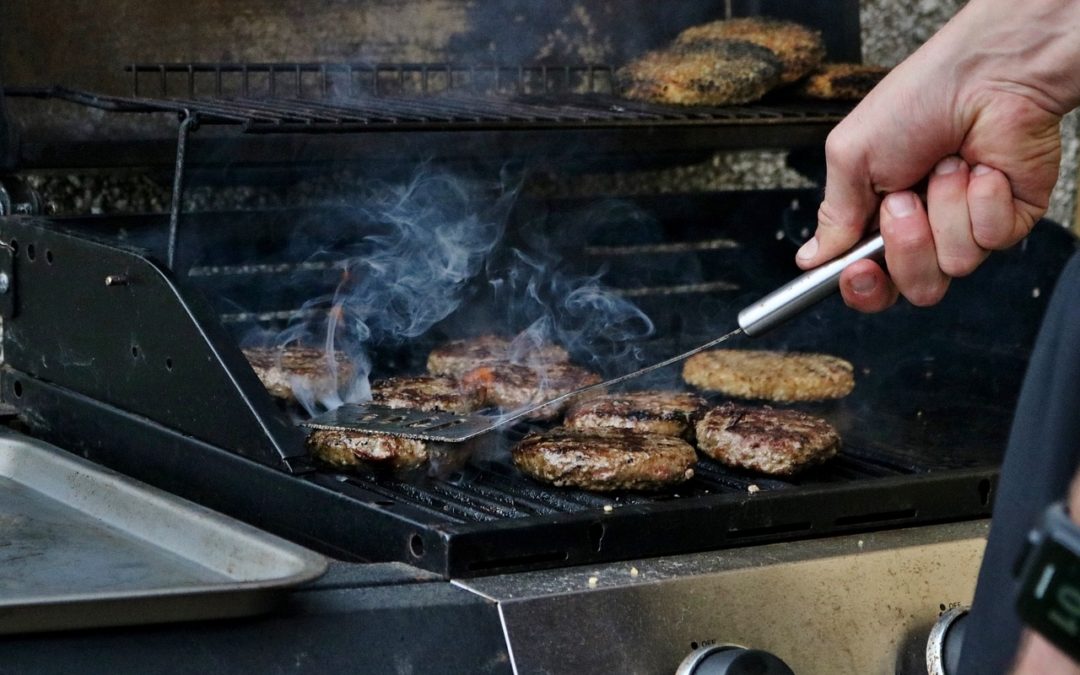Think all burgers are created equal? They’re not, say grilling experts. You need the right ingredients, preparation and grilling techniques to make burgers that can truly be declared “best.”
Fire up your natural gas grill
to celebrate National Grilling Month.
In honor of National Grilling Month, Walton Gas has combed the internet for tips from butchers and leading outdoor cooking authorities to prepare this backyard burger basics guide.
1. INGREDIENTS
DO: Work with a butcher.
The best burgers begin with the right meat and the right grind. To get exactly what you want, step up to the butcher counter at your favorite store and ask for help, advises Walter Apfelbaum, executive butcher at Detroit steakhouse Prime + Proper.
DO: Choose the right meat.
Basic ground beef doesn’t make the best burger, but neither do the priciest cuts. The best bet: ground chuck, advises grill master Kelsey Heidkamp in a video for Weber.com.
Its deep beefy flavor with ample, but not excessive, fat makes ground chuck the best meat for burgers. Ground chuck, which comes from the shoulder, falls right in the sweet spot of 15 to 20 percent fat.
Other — even more expensive — cuts of meat have insufficient fat content. Round and sirloin, for instance, are too lean to make good burgers.
DON’T: Skimp on the fat.
In our weight conscious world, it’s tempting to want to lower the fat content of your burger. But burgers need fat, reminds Apfelbaum.
“You’re going to want a higher percentage of fat if you’re grilling, because you lose a lot of the fat on a grill when it drips through the grates. More fat will help create a juicier burger and a better crust,” he explains.
DO: Mix meats.
If you’re using a lean meat, like ground turkey or chicken, consider combining it with ground pork or bacon, recommends thespruceeats.com. Not only will the additional fat balance out the leanness, it will contribute a lovely porky flavor.
2. PREPARATION
DO: Form patties with care.
Ground beef is not Play-Doh, remind the editors at cookscountry.com. The more you handle it, the denser and more rubbery it will become when cooked. After you’ve seasoned the meat, divide it into individual portions and, with lightly cupped hands, gently shape into patties that are 1-inch thick.
Also, fight the temptation to load the meat with seasonings and flavoring ingredients, adds thespruceeats.com. Too many additions, particularly if the pieces are large, will weaken the patty, causing it to fall apart on the grill when you try to turn it. Best bet: Use 1 teaspoon of table salt for 1 1/2 pounds of ground beef, the amount you will need to make four burgers.
DO: Prep the grill.
Burgers 101 outlines these steps to get your natural gas grill burger ready:
- Heat up your grill and clean it with a sturdy grill brush to remove any debris left from the last cookout.
- Then, grab a wad of paper towels with a pair of long-handled tongs and dip them in a bowl of vegetable oil. When the towels have absorbed the oil, run them over the cleaned grill grate. The oil will burn off at first.
- Continue to dip the towels into oil and slick down the grate; it will become “nonstick.”
- When the grate turns black and glossy, your grill is ready for the burgers.
DON’T: Start with a flat patty.
Burgers tend to puff up in the middle as they cook, making the tops rounded and awkward for piling on toppings. A good trick for avoiding this problem is pressing a little indentation into the top of each raw patty with your thumb or the back of a spoon, advises Heidkamp.
3. METHOD
DO: Grill over high heat.
“You want to make sure to grill your burgers over substantial heat to form that nice crust (flavor/texture) that we all love,” recommends Matt Moore, host of the Art of Manliness podcast. Cook your burgers between 450 and 500 degrees to achieve immediate searing, which locks in juices.
DO: Flip only once.
Flip the burgers just once — after they’ve developed deep brown grill marks — and don’t be tempted to press on them, advises cookscountry.com. Pressing down on the burgers as they cook squeezes out the flavorful juices, which end up in your grill (causing flare ups) instead of in your burgers.
DO: Close the grill if there’s a flare up.
Cutting off the oxygen should quell the flames, adds Moore.
DON’T: Guess about doneness.
For consistently delicious burgers cooked to just the right degree of doneness, Use an instant-read thermometer to take the temperature in the center of each burger, instructs Burgers 101.
Medium rare: 125 to 130 degrees, 2 to 3 minutes per side.
Medium: 135 to 140 degrees, 3 to 4 minutes per side.
Medium-well: 145 to 160 degrees, 4 to 5 minutes per side.
Well-done: 160 degrees and up, 5 minutes and up per side.
Note: Keep in mind that eating burgers rare or even medium does carry certain health risks.
DO: Allow your burgers to rest.
Let your cooked burgers rest for a few minutes before serving, suggests Moore. This will ensure that the juices redistribute into the meat.
If you follow these easy tips for making the best burger ever on your natural gas grill, they will make you the star of the summer grilling season. Happy National Grilling Month from Walton Gas!
